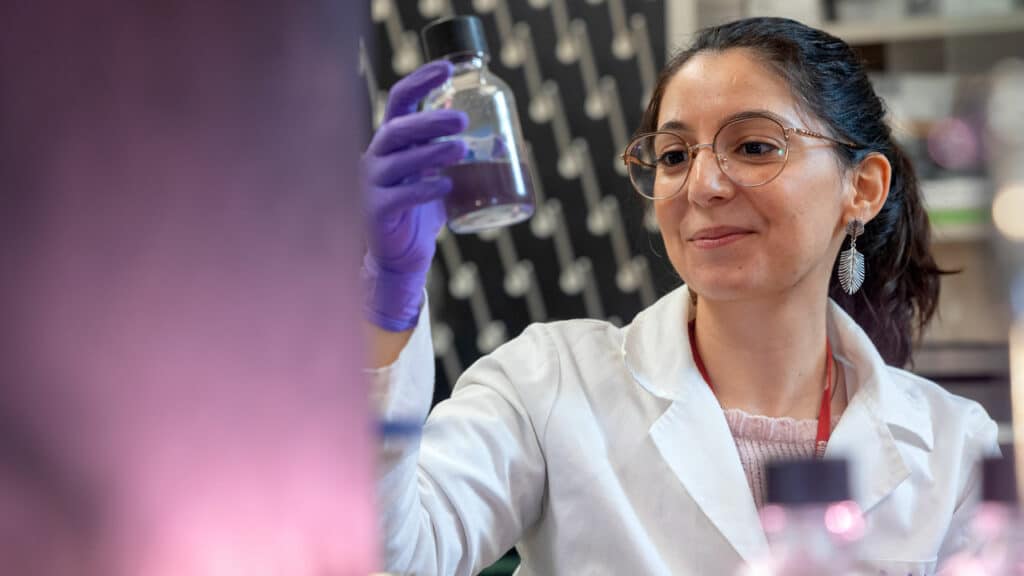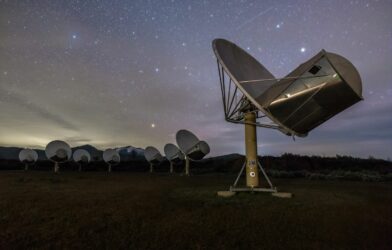As we continue our cosmic hunt for life beyond Earth, astrobiologists are broadening their horizons beyond the lush green landscapes that characterize our planet. A new study by researchers from Cornell University and the University of Minnesota suggests that purple-pigmented bacteria could be key players in the search for extraterrestrial life, potentially thriving on distant worlds and leaving their colorful mark.
While green vegetation, powered by chlorophyll-based photosynthesis, dominates modern Earth, it wasn’t always the case. Before the rise of oxygen-producing photosynthesis, our planet was likely painted in hues of purple, thanks to ancient microbes known as purple bacteria. These fascinating organisms use unique pigments called bacteriochlorophylls to harness light energy, much like plants use chlorophyll. However, purple bacteria have a few tricks up their sleeves that could allow them to flourish in a wider range of cosmic environments.
One of the most intriguing aspects of purple bacteria is their ability to photosynthesize using near-infrared light. While chlorophyll primarily absorbs red and blue light, bacteriochlorophylls can capture energy from the far-red to near-infrared part of the spectrum, wavelengths that are invisible to the human eye. This unique capability could give purple bacteria a competitive edge on planets orbiting red dwarf stars, also known as M-type stars.

Red dwarfs are the most common type of star in our galaxy, making up about 75% of all stars. They are smaller and cooler than our Sun, emitting most of their energy in the red and infrared range. This means that planets in the habitable zones of red dwarfs—regions where temperatures could allow for liquid water on a planet’s surface—receive less visible light and more infrared radiation compared to Earth. For purple bacteria, this infrared-rich environment could be a perfect match, allowing them to thrive where traditional chlorophyll-based photosynthesis might struggle.
But the adaptability of purple bacteria doesn’t stop there. Some species, such as those found near deep-sea hydrothermal vents on Earth, can rely solely on near-infrared energy for photosynthesis. In these lightless depths, purple bacteria have demonstrated their ability to sustain themselves using the faint glow of thermal radiation. This remarkable feat suggests that purple bacteria could potentially survive on planets with even dimmer stars or in subsurface environments shielded from direct starlight.
“Purple bacteria can thrive under a wide range of conditions, making it one of the primary contenders for life that could dominate a variety of worlds,” said Lígia Fonseca Coelho, a postdoctoral associate at the Carl Sagan Institute (CSI) and first author of the study, in a media release.
For the study, published in the journal Monthly Notices of the Royal Astronomical Society, researchers grew a diverse collection of purple bacteria in the laboratory, spanning both oxygen-rich and oxygen-poor conditions. By measuring the reflectance spectra of these organisms—essentially, how they reflect different wavelengths of light—the researchers created a unique “color fingerprint” for each species. These fingerprints serve as valuable reference points for future astronomical observations, helping scientists identify the telltale signs of purple bacteria on distant worlds.

To explore how purple bacteria might impact the appearance of Earth-like exoplanets, the researchers used computer models to simulate planets dominated by these microbes. They found that worlds with surfaces rich in purple bacteria would have distinct reflectance spectra, with characteristic peaks and troughs in the visible and near-infrared range. Intriguingly, the strength of these spectral features varied depending on the specific mix of purple bacterial species and whether the organisms were in a fresh, hydrated state or a dry, dormant phase.
The team’s models encompassed a wide range of hypothetical planets, from water worlds entirely covered by oceans to frozen snowball states. They discovered that the presence of purple bacteria could significantly alter a planet’s overall reflectivity, with dry, dormant populations having a more substantial impact than fresh, metabolically active ones. Cloud cover also played a role, sometimes muting the spectral signatures of purple bacteria.
While the idea of purple-hued alien landscapes might seem fanciful, the study’s implications are far-reaching. By expanding our conception of potential biosignatures—signs of life detectable from afar—to include the unique pigments of purple bacteria, we increase our chances of finding life in the cosmos. As next-generation telescopes like the European Extremely Large Telescope and the proposed Habitable Worlds Observatory come online, they will be tasked with analyzing the light from countless exoplanets, searching for hints of biological activity.

Armed with the knowledge of purple bacteria’s spectral fingerprints, astronomers will be better equipped to interpret the data streaming in from these powerful observatories. The study’s authors have made their extensive database of purple bacterial reflectance spectra available to the scientific community, providing a valuable resource for researchers working to refine atmospheric models, design innovative observing strategies, and develop cutting-edge life-detection algorithms.
“We need to create a database for signs of life to make sure our telescopes don’t miss life if it happens not to look exactly like what we encounter around us every day,” said co-author Lisa Kaltenegger, CSI director and associate professor of astronomy. “We are just opening our eyes to these fascinating worlds around us. Purple bacteria can survive and thrive under such a variety of conditions that it is easy to imagine that on many different worlds, purple may just be the new green.”
As we stand on the brink of a new era in the search for extraterrestrial life, it’s clear that we must keep an open mind and a keen eye for the unexpected. While the emerald hues of chlorophyll have long been our go-to sign of life, the study by Coelho and her colleagues reminds us that nature’s palette is far richer and more diverse than we once imagined. In the quest to answer one of humanity’s most profound questions—are we alone in the universe?—purple bacteria may just be the key to unlocking a cosmos filled with colorful, living worlds.











